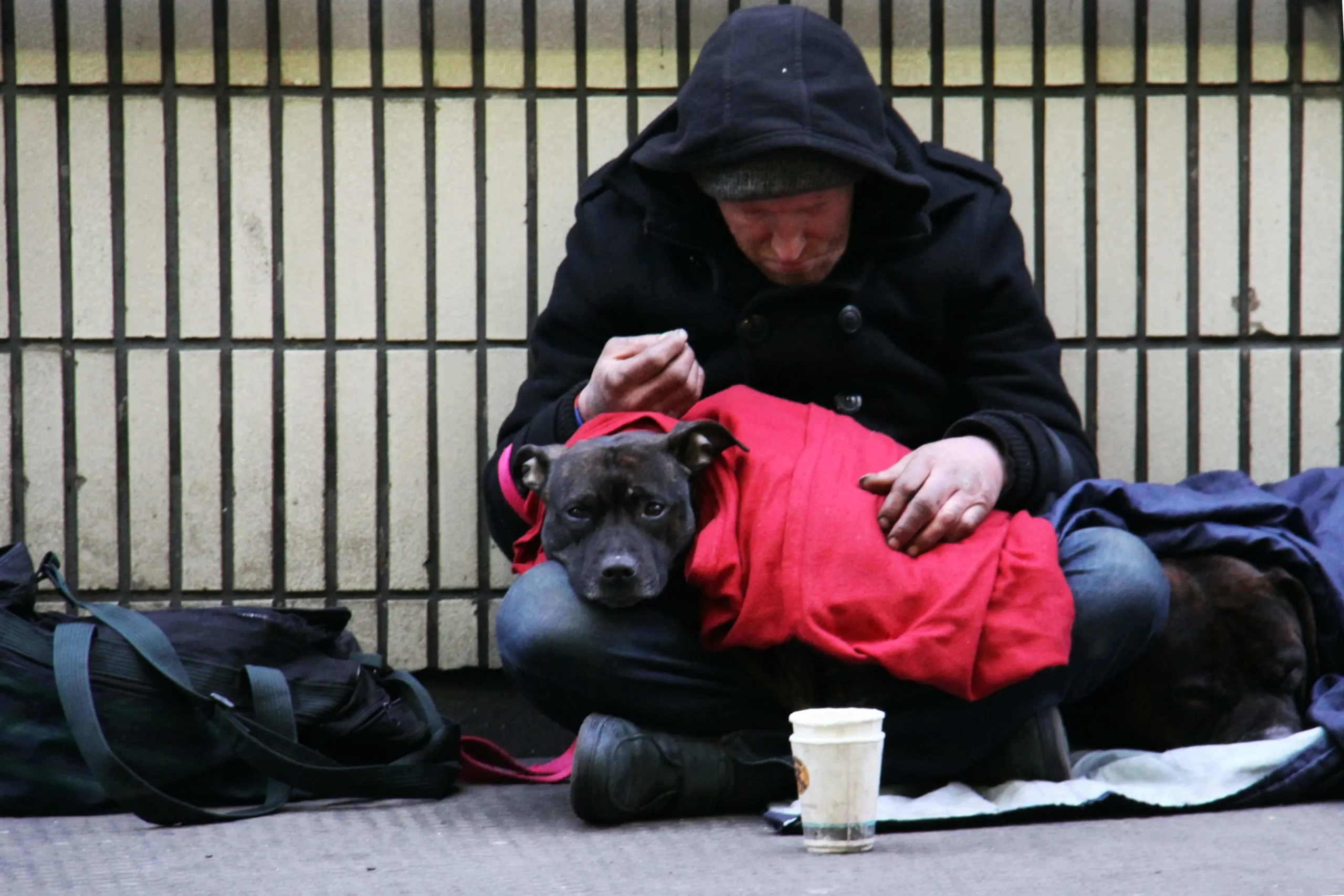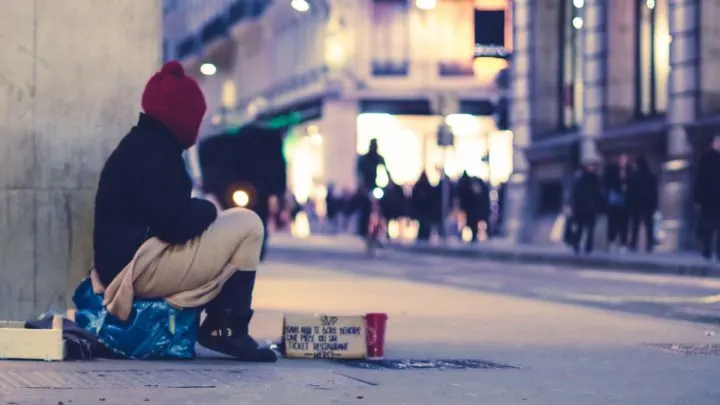Whether you’re researching a new community, hoping to help, or simply curious, you might be wondering which U.S. cities have the most homeless people.
We’re here to help in your quest for knowledge on cities that have the largest homeless populations. In this article, we’ll look at homelessness in the United States, what U.S. cities have the most homeless, and some resources.

The State of U.S. Homelessness
Before we dive into our top 10 list of what U.S. cities have the most homeless people, let’s look at some important context. While many states and cities have made progress getting people back on their feet, homelessness in the United States is on the rise.
The number of homeless people in the U.S. grew 6 percent between 2016 and 2020 and has increased each year for the past four years. Many of these people — about 39 percent — are living without shelters, according to Security.org’s annual report on the state of homelessness. Additionally, about 1 in 5 homeless people are children.
There’s also a significant bed shortage among shelters for homeless people. In 2019, the bed shortage in the U.S. states — the number of homeless people vs. the number of available beds — reached 192,793, according to the National Alliance to End Homelessness.
Looking back further, the U.S. has made some progress. In 2011, an estimated 624,000 people were considered homeless i.e. living in shelters, vehicles, or on the street. In 2020, the homeless population was about 580,000 people. It’s hard to know what COVID-19’s effects will be on the U.S. homeless population, but experts fear the pandemic exacerbated homelessness.
Next, let’s learn more about which U.S. cities have the most homeless people.
The U.S. cities have the most homeless
When looking at what U.S. cities have the most homeless people, it’s important to know that collecting data on the U.S. homeless population is often challenging and imprecise. Many statistics are based upon people that have received or interacted with social services in some way. Many homeless people never seek out such help, and thus are not counted in official tallies. Keep that in mind with the data below.
The data outlined in these cities are from the U.S. Department of Housing and Urban Development’s 2019 analysis of homelessness, Statista, and Security.org’s State of Homelessness report. HUD data on homelessness counts “continuum of care” areas, which can span multiple cities or an entire county.
With that context, let’s look at the U.S. cities have the most homeless people.
No. 1 — New York City
As the most populous city in the United States, it may come as no surprise that New York City tops the list of largest homeless populations.
HUD estimates that New York City has 78,604 homeless people that live in shelters and without shelter. Almost one in four people experiencing homelessness in the United States are located in New York City or Los Angeles, which has the second-largest population of homeless people. New York state ranks second overall both in number and per-capita homelessness, as there are about 466 homeless people per 100,000 residents.
For New York City housing and homelessness resources, visit the NYC Department of Homeless Services.
No. 2 — Los Angeles City and County
Los Angeles is the second-largest city in the U.S. by population and has the second-largest homeless population. HUD estimates that Los Angeles City and County has a homeless population of about 56,257 people.
Unlike New York, homeless people in Los Angeles, and California in general, are more likely to live without shelter and on the street. HUD reports an estimated 72 percent of homeless people in California are unsheltered compared to just 4.4 percent in New York. California as a whole ranks fourth among states for per-capita homelessness, as there are about 406 homeless people per 100,000 residents.
For California housing and homelessness resources, visit the California Department of Social Services.
No. 3 — Seattle-Tacoma
Homelessness is a particularly acute problem in large cities, including Seattle-Tacoma. HUD estimates that Seattle-Tacoma has a homeless population of about 11,199 people.
While its total homeless population is much lower than New York City or Los Angeles, Seattle-Tacoma still is well above the national average rate of homelessness of 170 out of every 100,000 residents. Seattle-Tacoma’s rate of homelessness was more than twice that rate at 366 people per 100,000 residents.
For Seattle housing and homelessness resources, visit the King County Homeless Housing Program.
No. 4 — San Jose/Santa Clara City and County
As you’ve likely noticed, large California cities are heavily represented on the list of U.S. cities that have the most homeless people. In fact, 6 out of the 10 cities with the largest populations of homeless people are located in California, including No. 4 San Jose.
HUD estimates that San Jose/Santa Clara City and County has a homeless population of about 9,706 people. San Jose ranks sixth among U.S. cities for its rate of homelessness at 482 people per 100,000 residents.
No. 5 — San Diego City and County
Rounding out the top five is another large city in California.
HUD estimates that San Diego City and County has a homeless population of about 8,102 people. San Diego ranks at No. 29 among U.S. cities for its rate of homelessness at 228 people per 100,000 residents.
No. 6 — San Francisco
In its 2019-2020 budget, San Francisco spent more than $364 million on homeless services — with more than two-thirds spent on housing costs. Despite that steep bill, 5,180 people were left unsheltered.
HUD estimates that San Francisco has a homeless population of about 8,035 people. However, the National Homeless Information Project estimates that San Francisco’s homeless population is more than 17,000 people. San Francisco ranks at No. 11 among U.S. cities for its rate of homelessness at 397 people per 100,000 residents.
No. 7 — Oakland / Alameda County
Families and children comprise a large percentage of Oakland / Alameda County’s homeless population. Families make up about 43 percent and children about 28 percent of Alameda County’s homeless population, according to the 2019 Alameda Homeless Survey.
HUD estimates that Oakland / Alameda County has a homeless population of about 8,022 people in total.
No. 8 — Phoenix / Maricopa County
HUD estimates that Phoenix / Maricopa County has a homeless population of about 6,614 people. While Phoenix / Maricopa County has a relatively high total population of people experiencing homelessness, its population-adjusted homeless rate is low at 147 people per 100,000 residents.
For Phoenix housing and homelessness resources, visit the City of Phoneix’s Homeless Services page
No. 9 — District of Columbia
Although it’s still among the top 10 cities, District of Colombia has recently decreased its homeless population. HUD estimates the District of Columbia had a homeless population of about 6,380 homeless people in 2020 — down from 6,521 people in 2019. Individuals comprise most of District of Colombia’s homeless population at about 62 percent, followed by 38 percent that are homeless families.
For District of Columbia housing and homelessness resources, visit the city’s Department of Human Services or visit the DC Coalition for the Homeless.
No. 10 — Boston
Closing out our top 10 list is another large east coast city. While Boston has successfully shrunk segments of its homeless population — Chronic homelessness was reduced by 19 percent and veteran homelessness reduced by 32 percent in 2020 — it still struggles. HUD estimates that Boston has a homeless population of about 6,242 people. Boston ranks at No. 40 among U.S. cities for its rate of homelessness at 179 people per 100,000 residents.
For Boston housing and homelessness resources, visit the Friends of Boston’s Homeless page.
Types of homelessness
There are many misconceptions about homelessness in the U.S., and the varying forms of homelessness.
There are four types of homelessness — episodic, transitional, chronic, and hidden — and each presents its own set of challenges that people must overcome to find a permanent home. Learn more about the four types of homelessness here.
Finding help
Exiting homelessness can be difficult, but there are many resources and people willing to help.
A good way to start researching resources is to visit the National Alliance to End Homelessness’s 4-step process to get help. You also can contact your community’s Continuum of Care program to learn about access to shelter, housing, and other resources that can help those experiencing any type of homelessness. You can find contact information information on specific resources in your area by looking at this map.
Many recourse centers and shelters for homeless people help people move from homelessness to permanent housing by offering support, a structure to successfully exit homelessness, and at times, education and training for employment opportunities.
Here’s another helpful guide from Low Income Relief on where to go if you are homeless.
In Conclusion
Many cities in the U.S. struggle with homelessness and supporting people with the vital resources they need. While the need is great, a better understanding of the challenge can help us address it for the future.
Through this piece, we hope you’ve learned more about homelessness in the United States, what U.S. cities have the most homeless, and some resources that can help.

